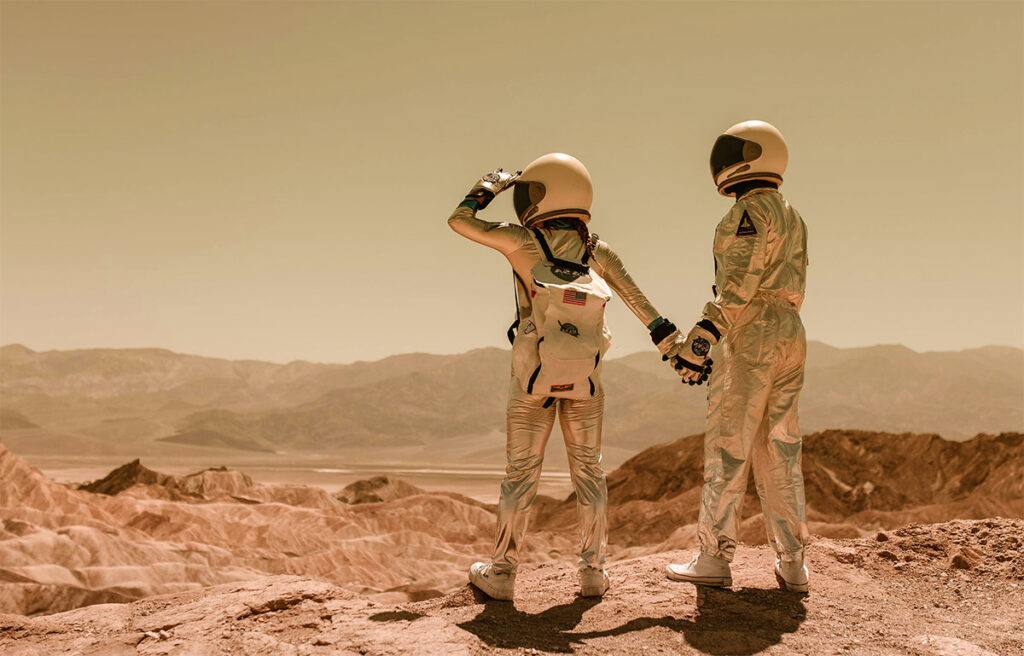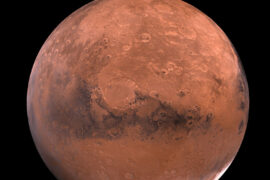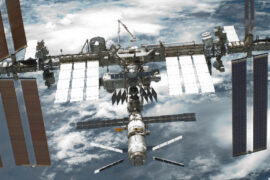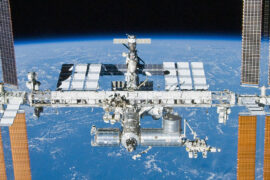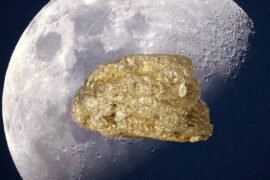We all hear about the plans NASA and private companies like SpaceX have to take humans to Mars. But how is that going to work in reality? the most basic questions arise when you talk about living on a whole new planet. How are we going to walk, what are we going to eat, but first of all, can humans even breathe on Mars?
Humans cannot breathe Martian air. The air on Mars is extremely thin, it has too little oxygen and it is too toxic (It has too much carbon dioxide). The only way humans could possibly breathe on Mars is by using a pressurized spacesuit and bringing their own oxygen.
Mars’ Air
Mars does have an atmosphere with air, but it is very different in composition from Earth’s atmosphere and the air we breathe here.
For starters, the air pressure is extremely low. On average, it is about 0.095 psi or about 6.5 millibars. For comparison, Earth’s atmosphere, at sea level, is over 14.7 psi, or 1,000 millibars. This means the Martian atmosphere is over 150 times thinner than Earth’s.
Then there’s the issue of the actual composition of elements in that air compared to Earth’s atmosphere:
| Element | Earth | Mars |
|---|---|---|
| Nitrogen | 78% | 3% |
| Oxygen | 21% | 0.13% |
| Argon | 1% | 1.6% |
| Carbon dioxide | 0.04% | 95% |
| Others | 0.1% | 0.3% |
As the table above shows, Mars’ air is mostly carbon dioxide, which is toxic for humans in large quantities. It also doesn’t have nearly enough the amount of oxygen that we need to breathe to survive.
What happens if you breathe on Mars
If a person were to breathe on Mars without a spacesuit, they would pass out within 30 seconds, and they would die within a minute or two. First, their lungs would fill once, but the difference in pressure between the human lungs and the Martian air would make it very difficult for them to exhale.
The carbon dioxide would act like poison in their body, but that’s not even the main problem as it might not even have time to kill them. The lack of oxygen would get them first as humans can’t last long without it.
Long story short: don’t get caught on Mars without a spacesuit.
How will astronauts breathe on Mars
When we send manned trips to Mars, astronauts will have to bring their own oxygen from Earth. They will breathe using perfectly sealed spacesuits with oxygen tanks that pump air into their helmets.
The life support system of the astronaut spacesuits also takes care of releasing the carbon dioxide the astronauts exhale and pressurizing the suit to simulate Earth’s atmosphere so they can breathe in and out comfortably.
The technology for these spacesuits has existed for many decades and they are, in essence, the same kind of spacesuits that are used today in spacewalk missions in the International Space Station, or the ones that were used for the Moon landing missions.
Can we make oxygen on Mars?
For only, the plan of the first manned missions to Mars is to bring our own oxygen from Earth, however, long term, if we were to build a permanent colony on the red planet, we would need a solution that wouldn’t require back and forth expensive trips between planets.
NASA is already looking for a solution to the problem of making oxygen on Mars. Or better said, gathering oxygen on Mars because we can’t really “make” oxygen. The plane is to collect the little traces of oxygen in the Martian atmosphere.
The project is called MOXIE and the first experiments are already being executed by the Perseverance Mars Rover as we speak.
This not only would be useful to fill breathable oxygen tanks for the spacesuits, but it would also help the problem of fuel for trips from Mars to Earth. With this, a ship would only need to bring the necessary fuel for a one-way trip as they could make their own fuel for the trip back on Mars, heavily reducing the costs of the journey.
A longer-term solution to the problem of oxygen on Mars would be changing Mars’ atmospheric composition to resemble that of Earth’s through a process called terraforming, but for now, that idea is more on the side of fiction.
Summary
- Humans can’t breathe on Mars without the help of a spacesuit.
- Mars’ atmosphere is too different from Earth’s for us to be able to breathe on it.
- Solutions are already being worked on for the upcoming manned missions to Mars.


